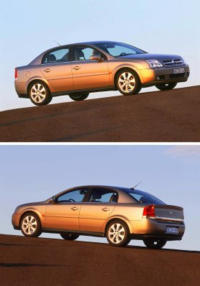GM readies new assault on mid-size car segment
GENEVA, March 5 Reuters reported that even though most Americans may never have heard of the Opel Vectra, the new General Motors car from its European brand hints at the future of mid-size vehicles for the Chevrolet, Saab, Saturn and Pontiac divisions for years to come.
The new Vectra, unveiled publicly at the Geneva auto show on Tuesday, is the first vehicle built off the Epsilon vehicle ``architecture'' that will share braking, steering, suspension and other components, as well as manufacturing systems, with at least four other GM vehicles to be rolled out in the United States in the next three years.
The Epsilon program is GM's largest effort to share vehicle architectures -- something that Volkswagen AG Toyota Motor Corp. have long been noted for in their drive to cut costs.
Volkswagen's Beetle, Golf, Bora/Jetta, Audi TT, Audi A3, Skoda Octavia and Seat Leon, for example, all share some components, but no one will mistake the vehicles. VW is able to spread parts costs and engineering work over a wide variety of vehicles appealing to a variety of buyers in countries around the world.
Similarly, the forthcoming Chevrolet Malibu, Pontiac Grand Am, Saab 9-3 and next generation Saturn L Series will run the gamut from a family car to a sporty performer to a near-luxury model.
GM expects about 1.2 million to 1.4 million GM vehicles will be built off Epsilon annually within about three years. Derivatives of the Opel Vectra could also be sold in South America and Asia, many under the Chevrolet brand name.
Gene Stefanyshyn, vehicle line executive of GM North America mid-size cars, estimates that the savings from the adoption of Epsilon will save the company around $1 billion at least.
Purchasing common components, instead of separate sourcing for three different vehicle architectures, will save $450 million to $600 million. An additional $300 million to $400 million is saved from combining engineering and manufacturing work. GM is then able to reinvest part of those savings into better components, such as a six-speed automatic and manual transmission.
Epsilon, the backbone of GM's new generation of mid-size cars and spacious car-like ``crossover'' vehicles, will be key as GM strives to reverse its sliding share of the car market in both North America and Europe.
So far this year, GM's U.S. vehicle sales have fallen 5.6 percent. But GM's truck sales have soared about 26 percent on the strength of its sport utility vehicles, while its car sales have plunged 17 percent.
``We feel pretty good about our products on the truck side, but we need to storm the car market,'' Gene Stefanyshyn, vehicle line executive of GM North America mid-size cars. ``We really need to make it happen in mid-size cars.''
Toyota's Camry and Honda Motor Co. Ltd.'s Accord currently dominate the mid-size car segment in the United States, setting the standards for quality and reliability.
Epsilon also represents GM's effort to ``act like one company'', and draw upon its resources around the world, rather than different regions working separately to develop their own vehicles for their own part of the world.
``The big benefits are we can bring together the best minds,'' Stefanyshyn said. ``We'll get a bit of technological expertise from the Europeans. We'll get a pretty good read on safety from Saab. We bring a pretty good quality system and global purchasing.''
The new Saab 9-3 will be the first car from Epsilon to arrive in North America this summer. The following summer, the new Malibu sedan will arrive, followed shortly by a so-called Malibu ``crossover'' vehicle that will sit upright, allowing more passenger and cargo space. Later comes the Grand Am coupe and sedan, and possibly a convertible, and lastly the successor to the Saturn L Series.



